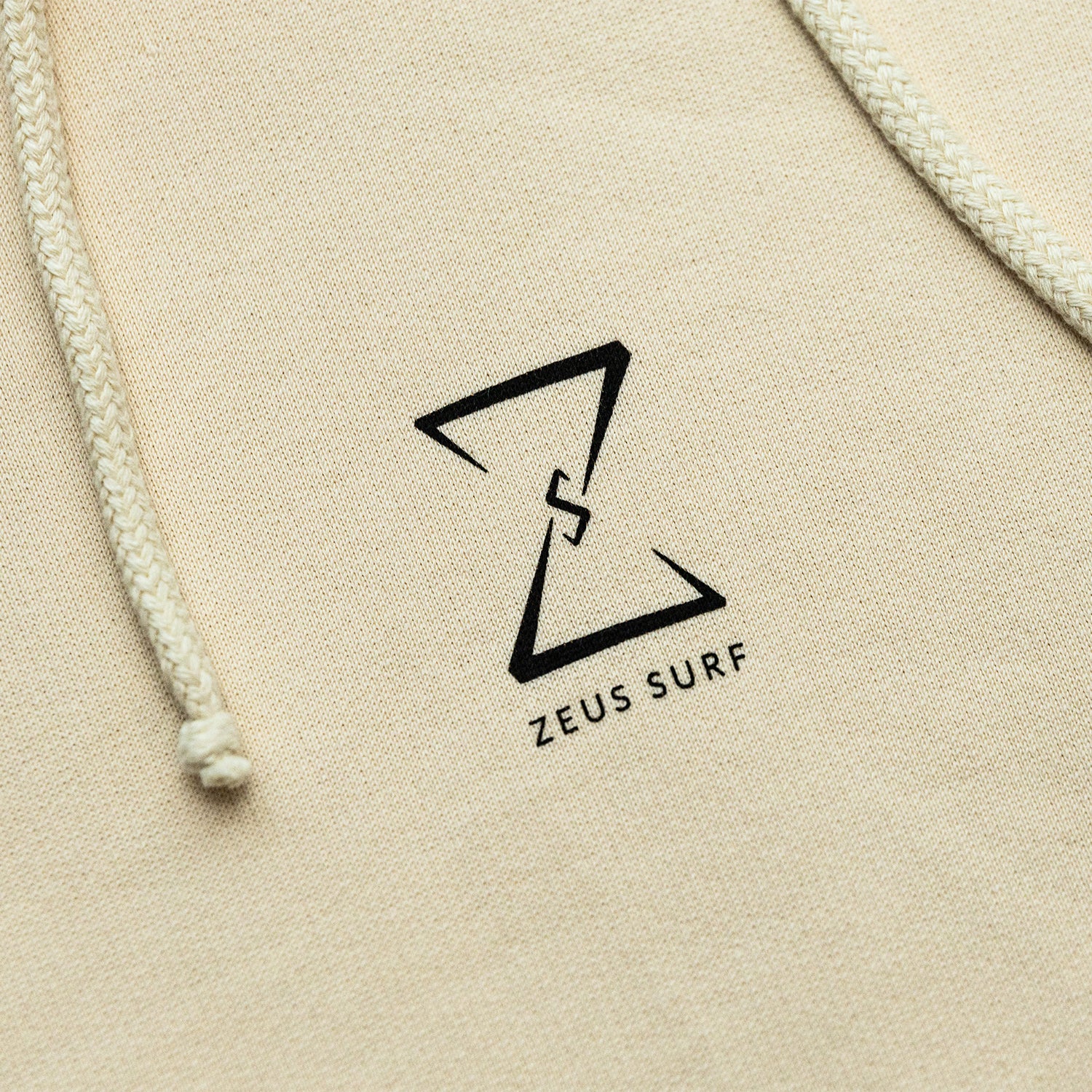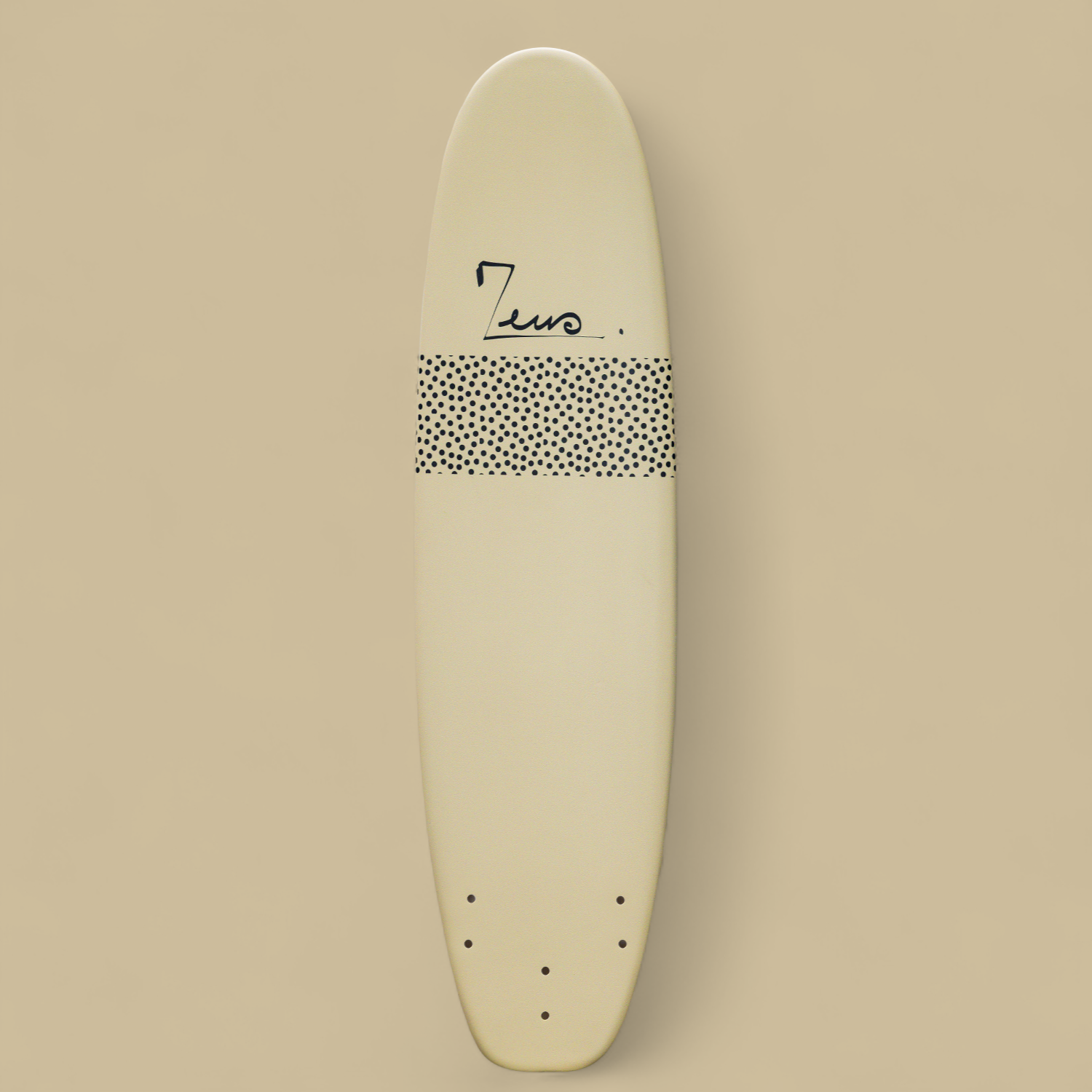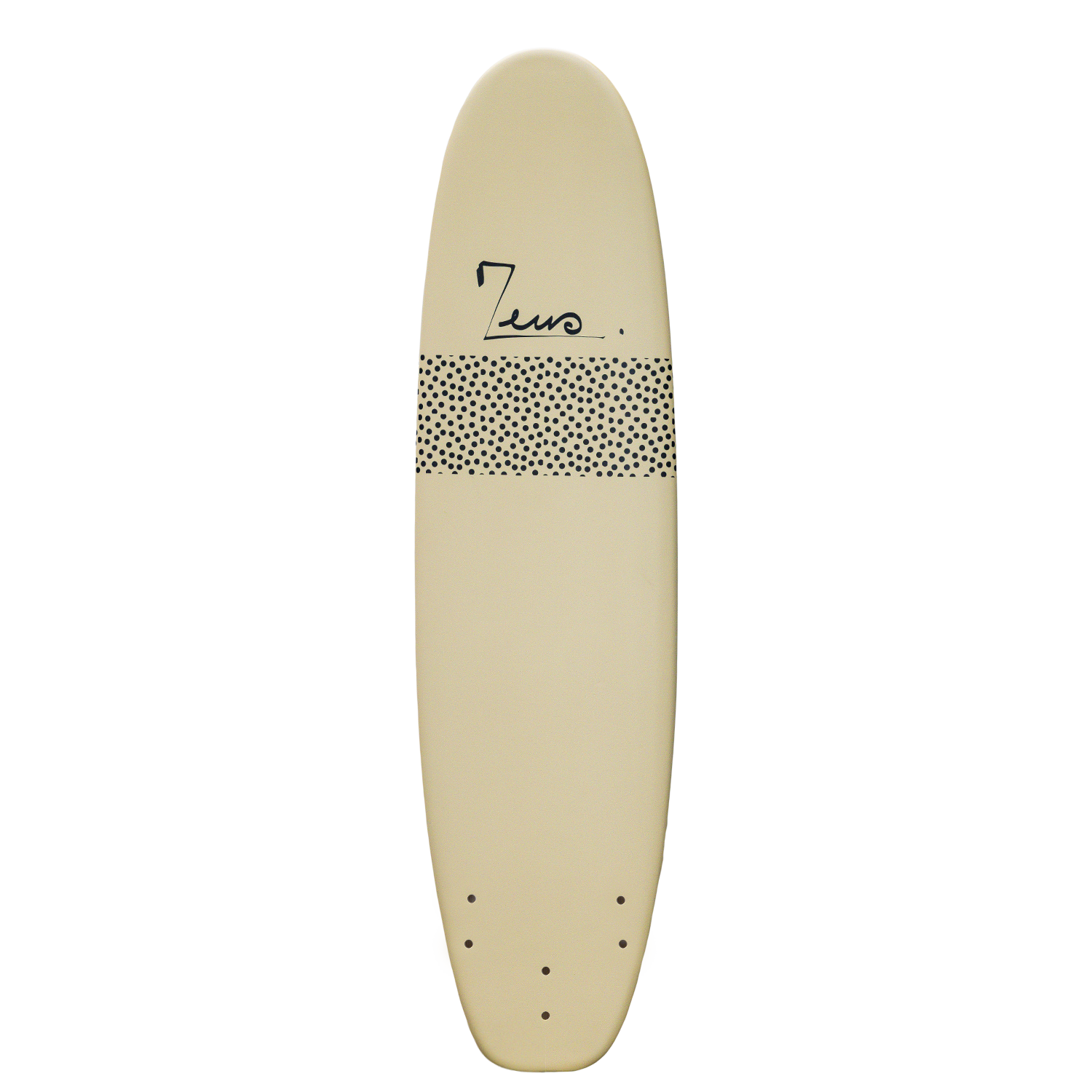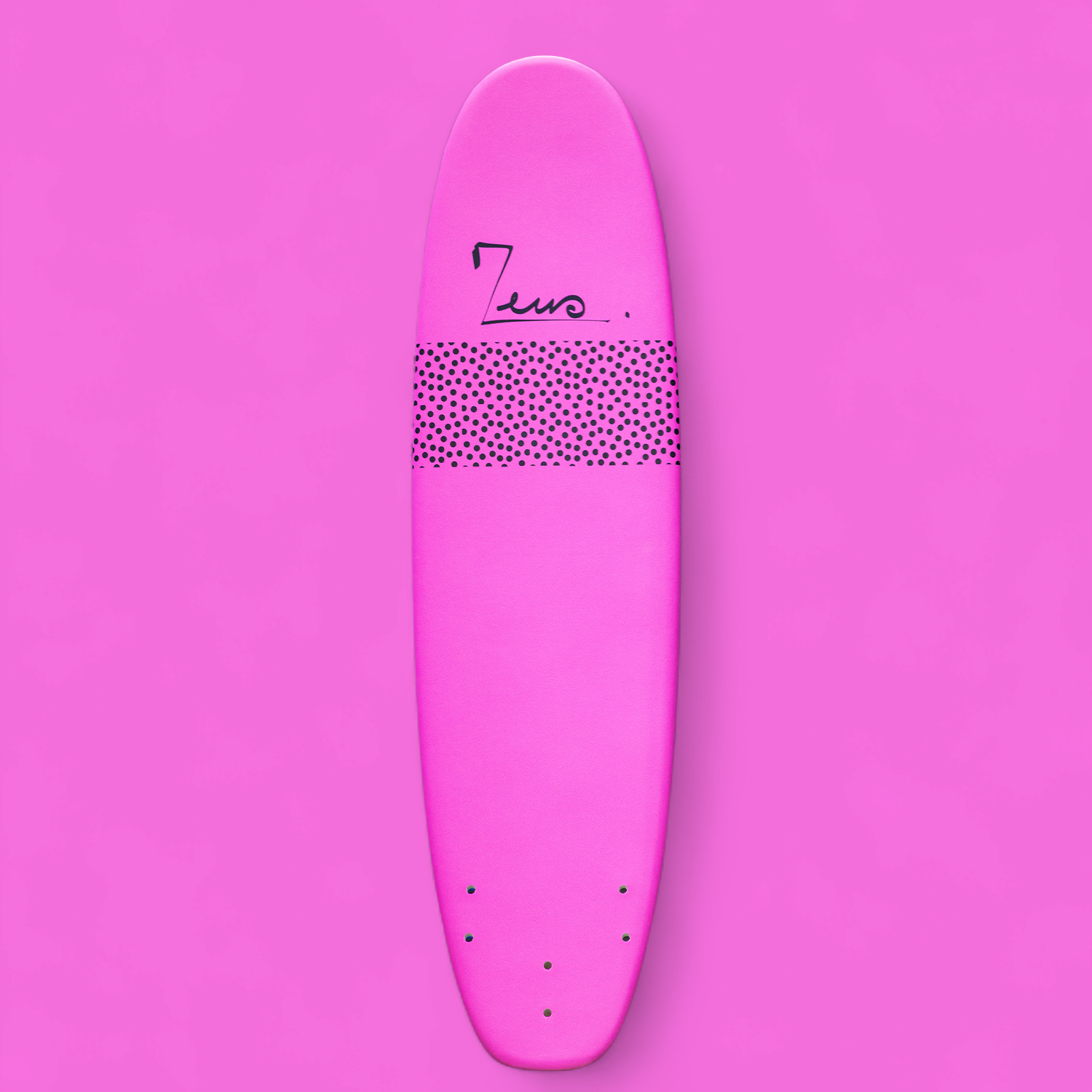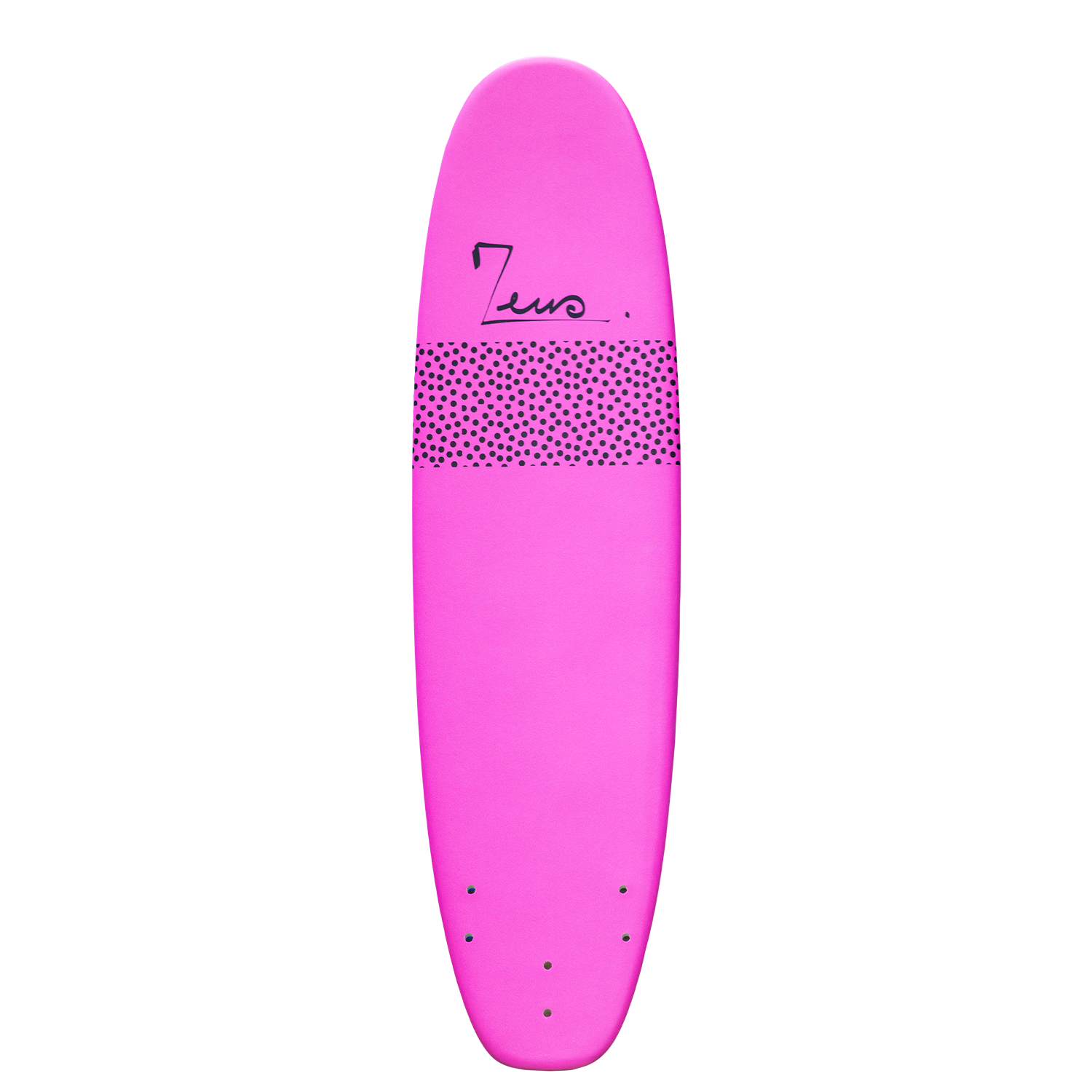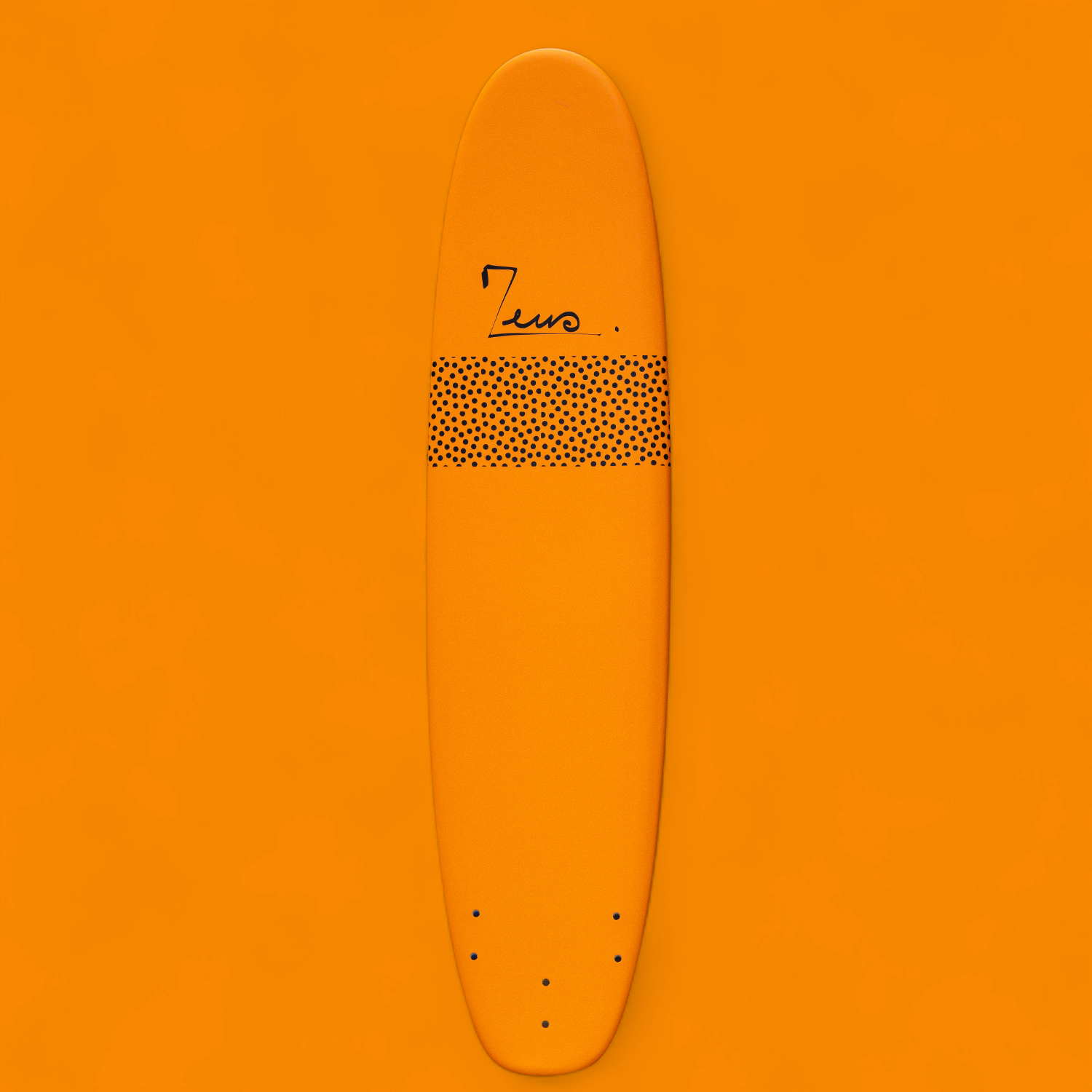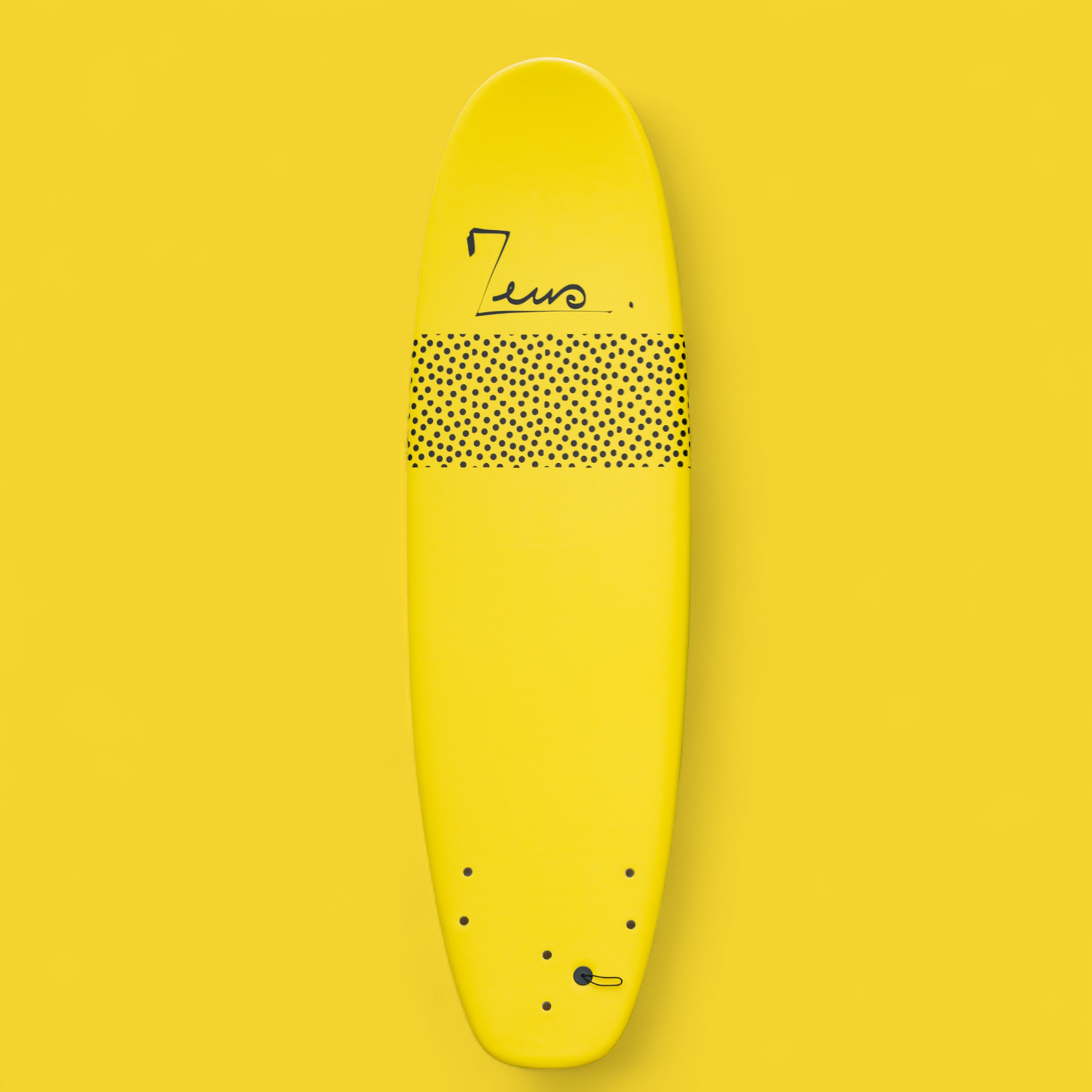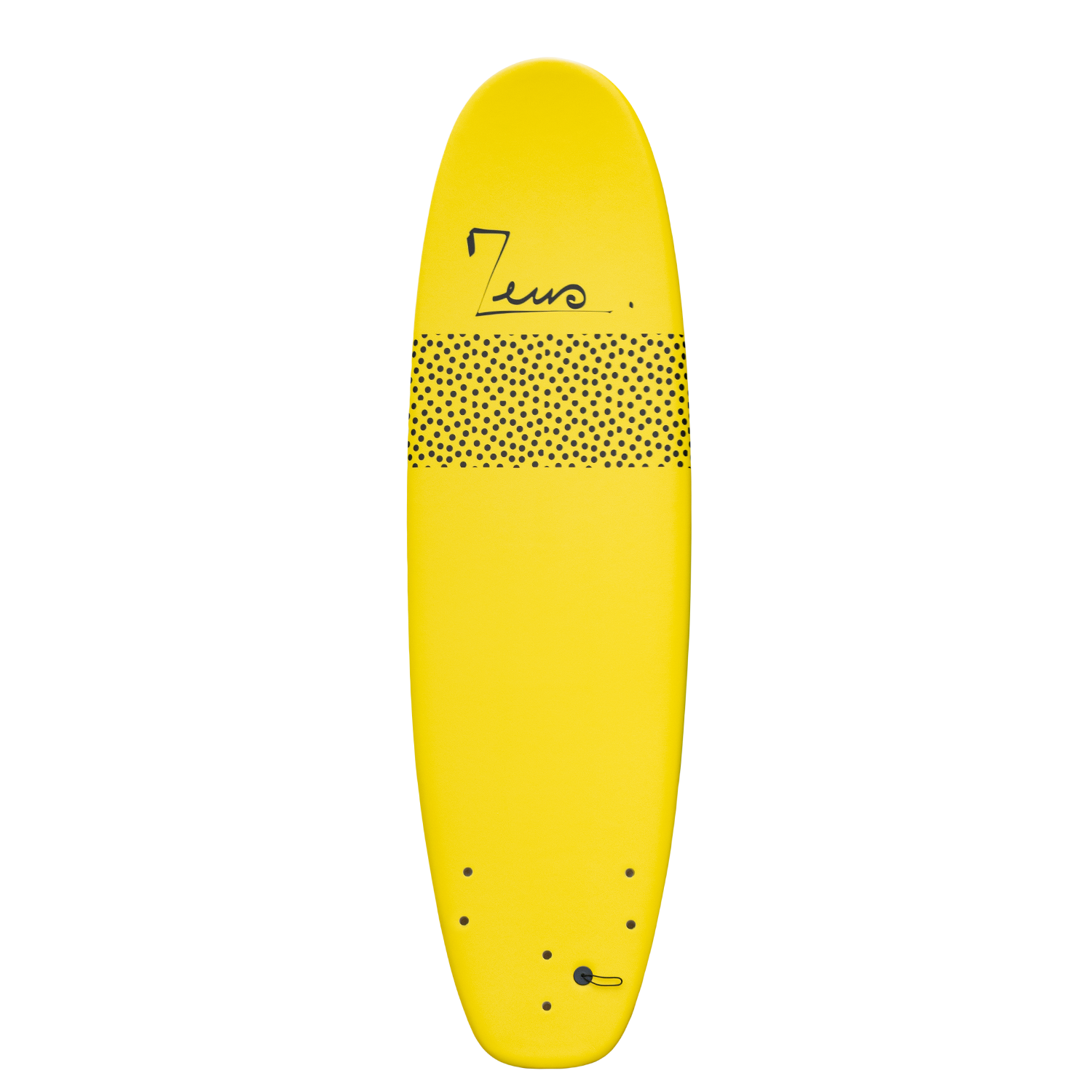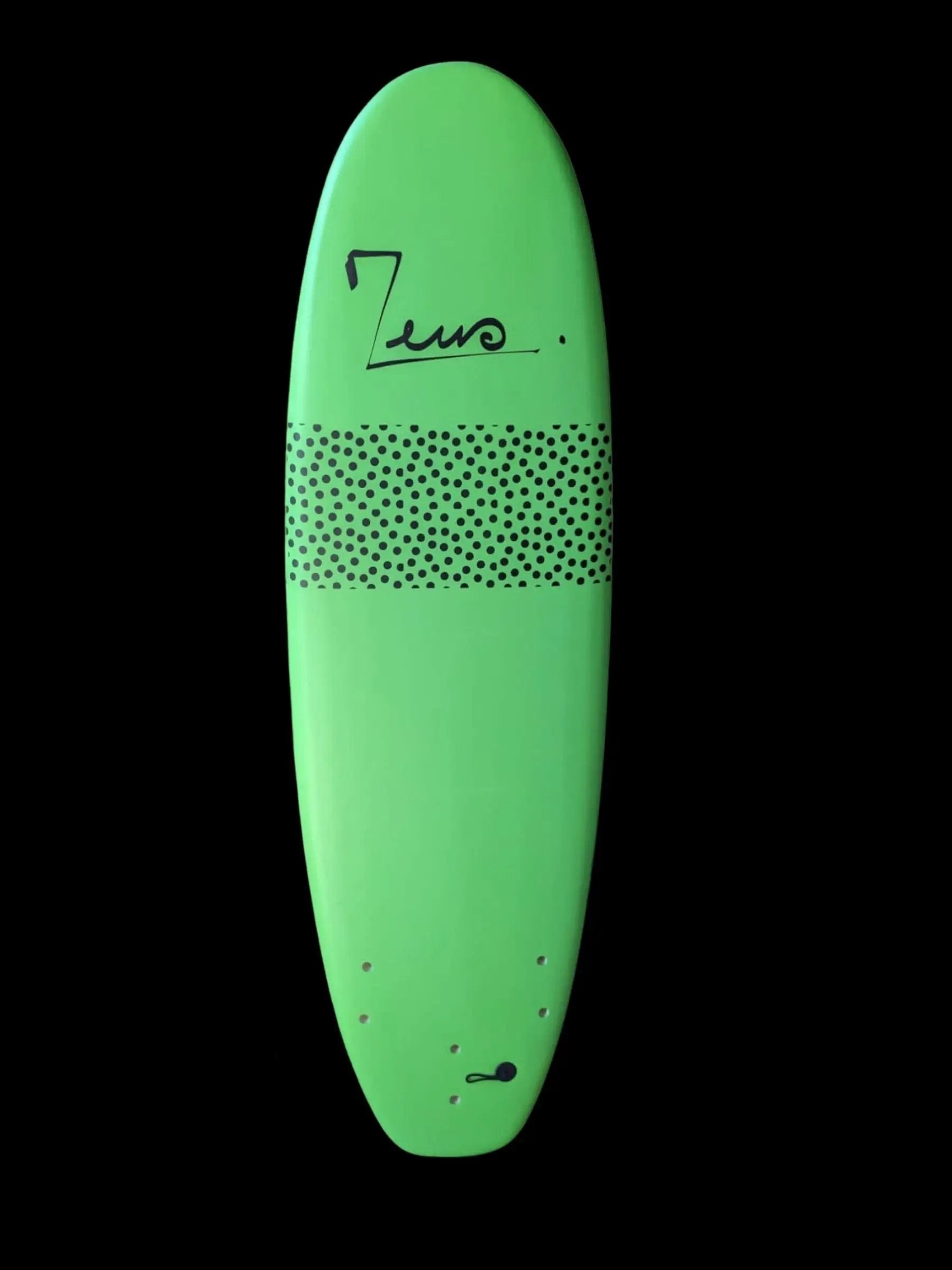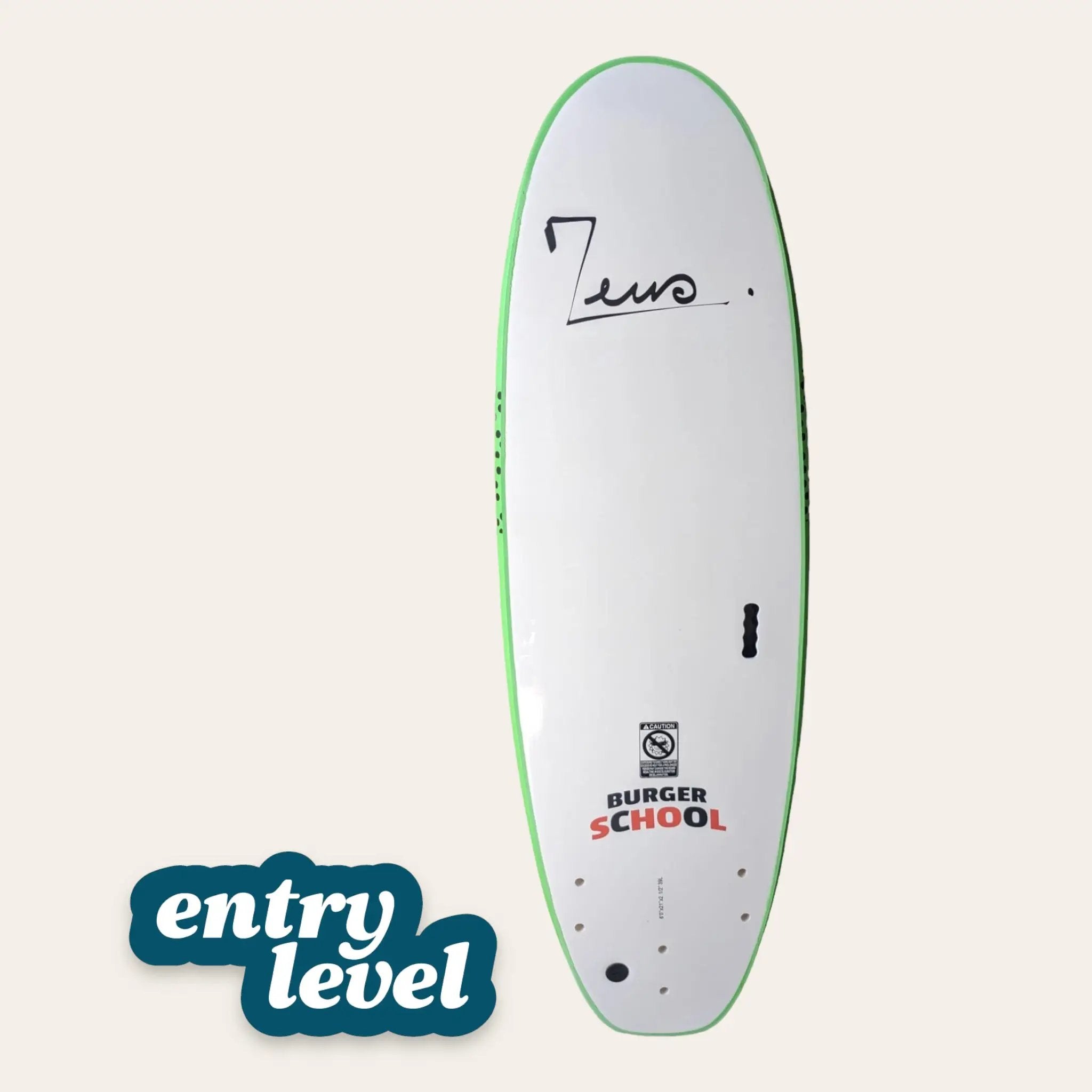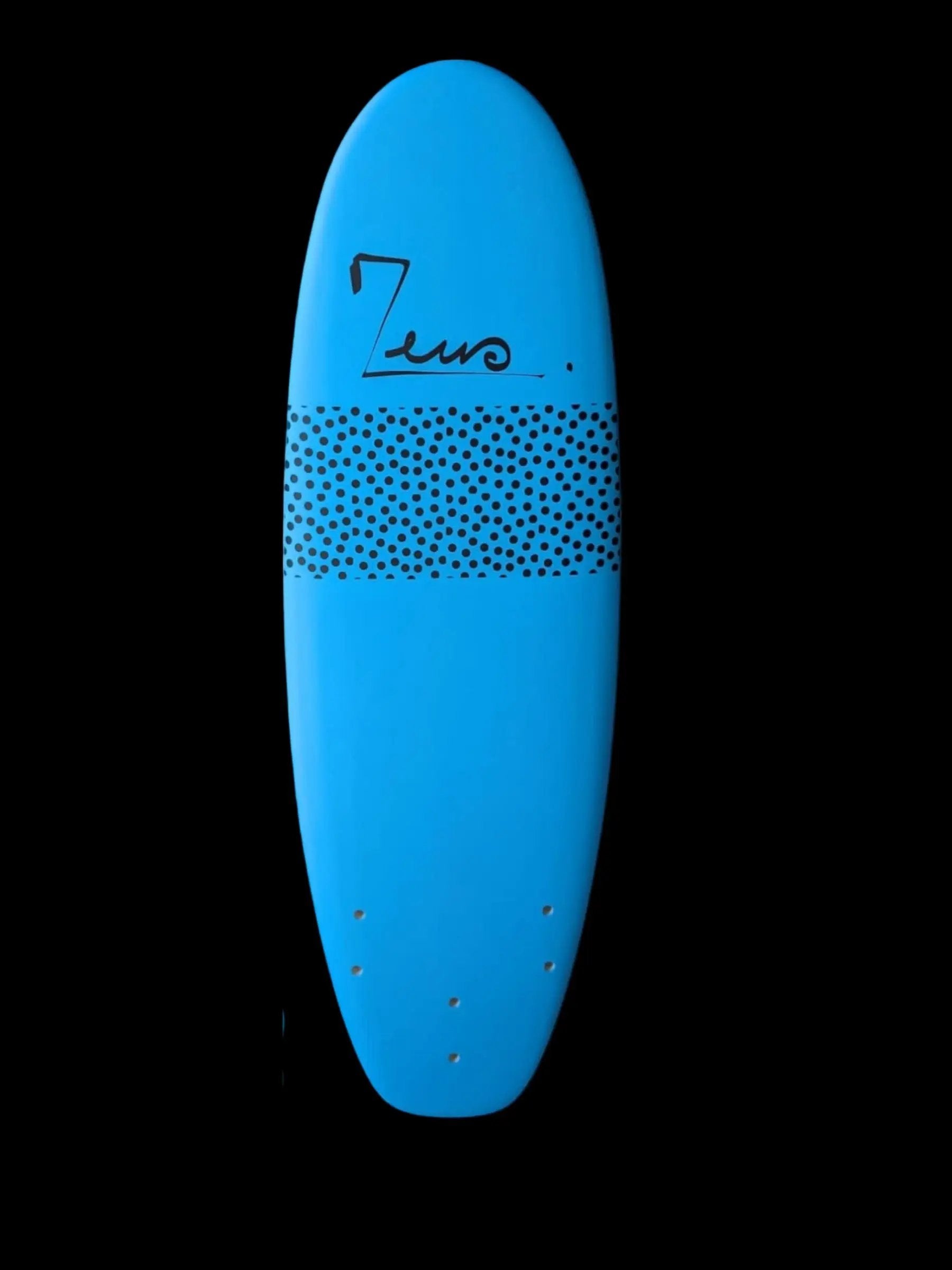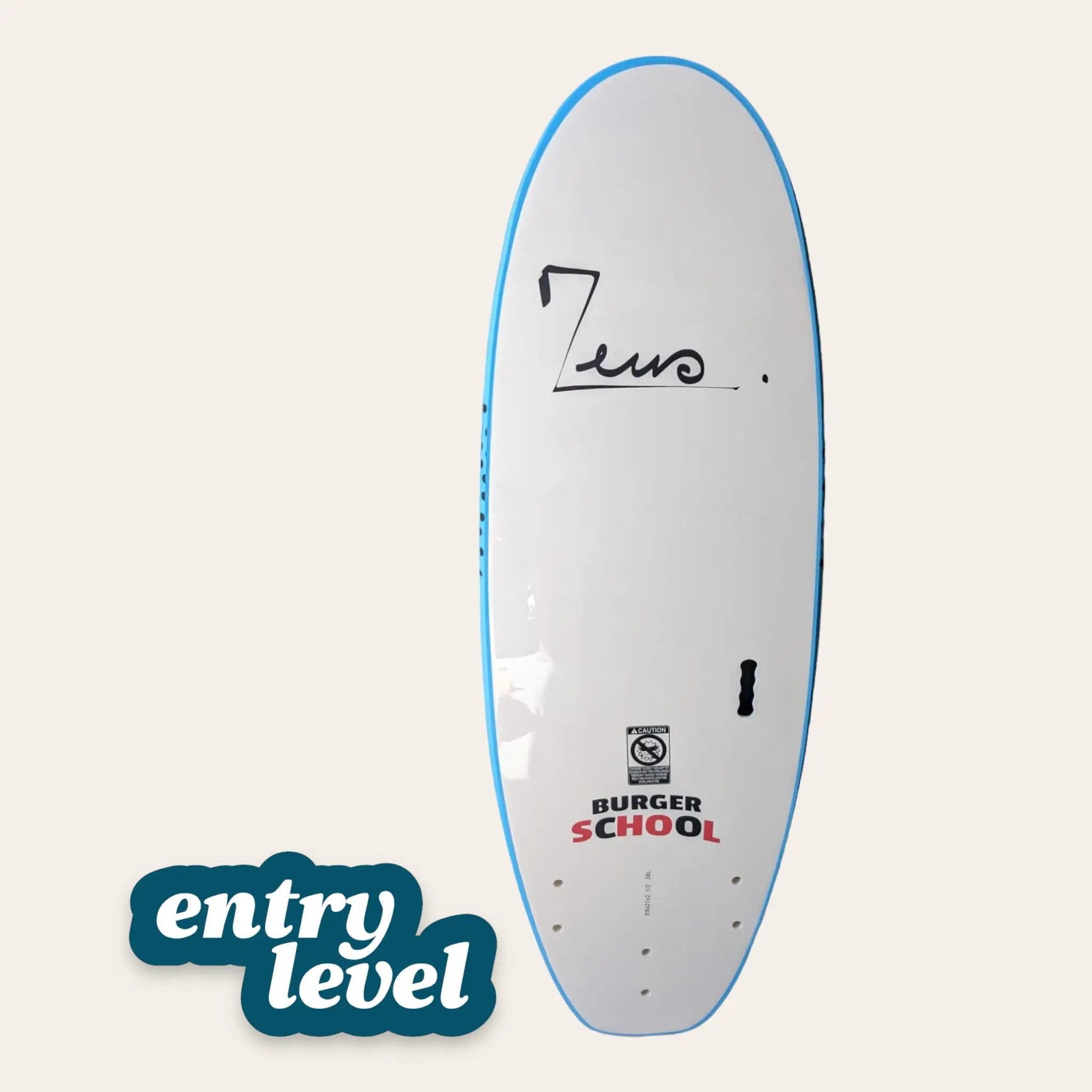FAQs
Everything you need to know about foam boards
What is a softboard?
A foam surfboard, also called a softop or softboard , is a surfboard whose outer shell, deck, bottom and rails are made of soft material, usually expanded polystyrene.
The soft foam surfboard shell absorbs shock, reducing the risk of injury in the event of a fall or collision.
What is the difference between a foam surfboard, a softboard, a softop and a foamie?
Originally, the first foam surfboards were rigid boards with a deck covered in non-slip EVA foam . We then spoke of a soft top board to say that the deck of the board was flexible compared to a resin board that had to be waxed.
Then came the boards with a flexible hull, directly inspired by bodyboards. The name softboard is thus generalized for this category of board.
Softboards have soft decks and hulls. The deck of the board is covered with non-slip foam . While the underside of the board is constructed with an HDPE slick .
Today, we talk about foam board or softboard to simplify.
How are foam boards constructed?
Foam surfboards are constructed using similar techniques as rigid surfboards. It’s the materials that change. The foam boards are covered with non-slip foam on the deck and slick on the hull.
The slick is made of HDPE (High Density Polyethylene): HDPE is a type of plastic which provides excellent rigidity and impact resistance while guaranteeing good gliding qualities to the board.
The core of the board is constructed with a block of polystyrene
What are the advantages of foam surfboards?
- Increased safety : the soft shell reduces the risk of injury in the event of a fall or collision.
- Ease of use : Foam surfboards are easier to handle than resin boards, making them ideal for beginners.
- Affordable : Foam surfboards are generally less expensive than resin boards.



